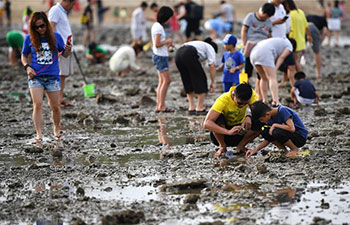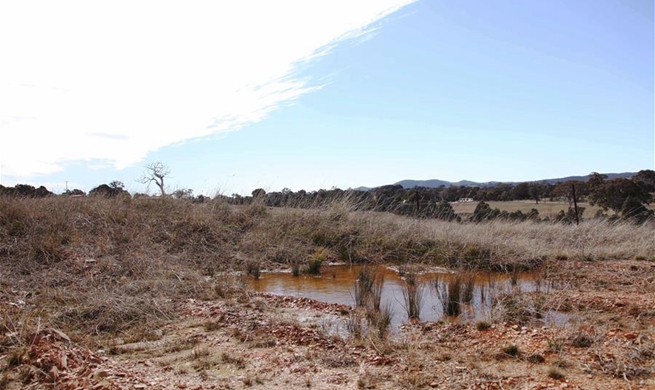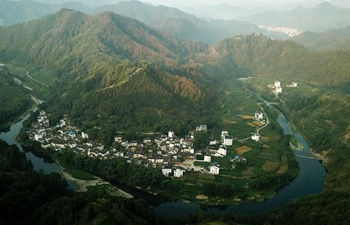by Xinhua writer Wu Jialin
COSCO NETHERLANDS, Aug. 12 (Xinhua) -- Waves gently pat the hull of COSCO Netherlands, a giant merchant vessel which is sailing on the Indian Ocean towards Greece and plans to finally reach Valencia, Spain on Aug. 31.
It is the first time for the multifunctional vessel, which is owned by China COSCO Shipping Corporation Limited, to take this route.
In November 2013, one month after China proposed the Belt and Road Initiative, the manufacturing of COSCO Netherlands was completed at a Chinese ship engineering company's factory along the Yangtze River.
In the following five years, this vessel has been sailing between the Pacific, the Indian Ocean and the Atlantic Ocean, carrying various types of merchandise, retracing and extending the ancient Maritime Silk Road, a trade route that can date back to China's Han Dynasty (206 B.C.-220 A.D.).
As the fifth anniversary of the Belt and Road Initiative approaches, the nearly-five-year-old COSCO Netherlands departed from Yangshan Deep Water Port in Shanghai at the end of July, starting its new voyage from the East to the Mediterranean.
The ship had traveled from the East China Sea to the South China Sea, and berthed in the ports of Ningbo, Kaohsiung, Hong Kong, Shenzhen and Singapore.
Previously its destination was northwestern Europe, including the Netherlands, Germany and Belgium. Its new voyage this time has resulted from the ever-growing trade between China and Europe.
COSCO Netherlands, 366 meters long, 51 meters wide and 67 meters tall, can carry up to 13,386 TEU (20-feet equivalent unit). As China's largest container vessel back in 2013, it previously had been assigned by COSCO Shipping to the route with the greatest demand the company operates -- from the Far East to northwestern Europe.
"With the facilitation of the 21st Century Maritime Silk Road, trade volume on this route continues to grow. Vessels with the carrying capacity of 13,000 TEU are not enough now," said Gu Longhua, captain of COSCO Netherlands.
In recent years, Gu said, China has built several larger ships that can carry more than 20,000 TEU at a time. COSCO has deployed these ships to sail to northwestern Europe, replacing COSCO Netherlands.
"However, the new route to the Mediterranean is important as well. It docks in more ports than before, providing passage between Chinese coastal regions, Southeast Asia and Mediterranean countries like Italy, France and Spain," Gu said.
COSCO Shipping offers services on more than 130 routes along the Belt and Road, namely the Silk Road Economic Belt and the 21st Century Maritime Silk Road. These routes account for a capacity of 1,200,000 TEU, more than 60 percent of the company's total container traffic.
The ancient Maritime Silk Road had once connected China with the rest of the world and witnessed trade and cultural exchanges that benefited peoples of different civilizations.
Today, as hundreds of container freighters like COSCO Netherlands make oceangoing voyages along routes that largely overlap the ancient Maritime Silk Road, an even stronger trade and infrastructure network is being built between countries and regions.
By promoting cooperation and mutual learning under the Belt and Road Initiative, China hopes to share development opportunities, revive the world economy and cement people-to-people exchanges.
Ocean waves have left some rust on the hull of COSCO Netherlands. The giant ship will be examined and repaired after this new voyage. In the near future, it will keep sailing among different continents and cultures, linking the world more closely.













